第57章 14(1)
Below the midriff lies the stomach, placed at the end of the oesophagus when there is one, and in immediate contiguity with the mouth when the oesophagus is wanting. Continuous with this stomach is what is called the gut. These parts are present in all animals, for reasons that are self-evident. For it is a matter of necessity that an animal shall receive the incoming food; and necessary also that it shall discharge the same when its goodness is exhausted. This residual matter, again, must not occupy the same place as the yet unconcocted nutriment. For as the ingress of food and the discharge of the residue occur at distinct periods, so also must they necessarily occur in distinct places. Thus there must be one receptacle for the ingoing food and another for the useless residue, and between these, therefore, a part in which the change from one condition to the other may be effected. These, however, are matters which will be more suitably set forth when we come to deal with Generation and Nutrition. What we have at present to consider are the variations presented by the stomach and its subsidiary parts. For neither in size nor in shape are these parts uniformly alike in all animals. Thus the stomach is single in all such sanguineous and viviparous animals as have teeth in front of both jaws. It is single therefore in all the polydactylous kinds, such as man, dog, lion, and the rest; in all the solid-hoofed animals also, such as horse, mule, ass; and in all those which, like the pig, though their hoof is cloven, yet have front teeth in both jaws. When, however, an animal is of large size, and feeds on substances of so thorny and ligneous a character as to be difficult of concoction, it may in consequence have several stomachs, as for instance is the case with the camel. A similar multiplicity of stomachs exists also in the horned animals; the reason being that horn-bearing animals have no front teeth in the upper jaw. The camel also, though it has no horns, is yet without upper front teeth. The explanation of this is that it is more essential for the camel to have a multiple stomach than to have these teeth. Its stomach, then, is constructed like that of animals without upper front teeth, and, its dental arrangements being such as to match its stomach, the teeth in question are wanting. They would indeed be of no service. Its food, moreover, being of a thorny character, and its tongue necessarily made of a fleshy substance, nature uses the earthy matter which is saved from the teeth to give hardness to the palate. The camel ruminates like the horned animals, because its multiple stomach resembles theirs. For all animals that have horns, the sheep for instance, the ox, the goat, the deer, and the like, have several stomachs. For since the mouth, owing to its lack of teeth, only imperfectly performs its office as regards the food, this multiplicity of stomachs is intended to make up for its shortcomings; the several cavities receiving the food one from the other in succession; the first taking the unreduced substances, the second the same when somewhat reduced, the third when reduction is complete, and the fourth when the whole has become a smooth pulp. Such is the reason why there is this multiplicity of parts and cavities in animals with such dentition. The names given to the several cavities are the paunch, the honeycomb bag, the manyplies, and the reed. How these parts are related to each other, in position and in shape, must be looked for in the treatises on Anatomy and the Researches concerning Animals.
Birds also present variations in the part which acts as a recipient of the food; and the reason for these variations is the same as in the animals just mentioned. For here again it is because the mouth fails to perform its office and fails even more completely-for birds have no teeth at all, nor any instrument whatsoever with which to comminute or grind down their food-it is, I say, because of this, that in some of them what is called the crop precedes the stomach and does the work of the mouth; while in others the oesophagus is either wide throughout or a part of it bulges just before it enters the stomach, so as to form a preparatory store-house for the unreduced food; or the stomach itself has a protuberance in some part, or is strong and fleshy, so as to be able to store up the food for a considerable period and to concoct it, in spite of its not having been ground into a pulp. For nature retrieves the inefficiency of the mouth by increasing the efficiency and heat of the stomach. Other birds there are, such, namely, as have long legs and live in marshes, that have none of these provisions, but merely an elongated oesophagus. The explanation of this is to be found in the moist character of their food. For all these birds feed on substances easy of reduction, and their food being moist and not requiring much concoction, their digestive cavities are of a corresponding character.
Fishes are provided with teeth, which in almost all of them are of the sharp interfitting kind. For there is but one small section in which it is otherwise. Of these the fish called Scarus (Parrot-fish) is an example. And this is probably the reason why this fish apparently ruminates, though no other fishes do so. For those horned animals that have no front teeth in the upper jaw also ruminate.